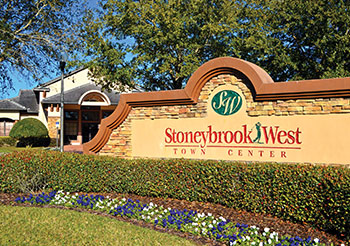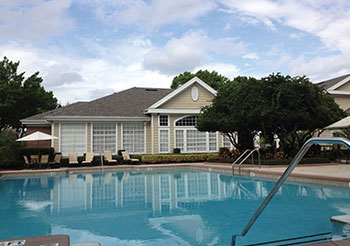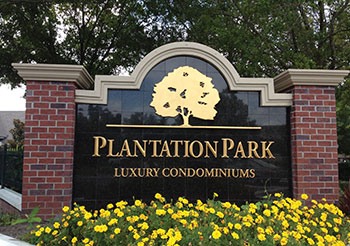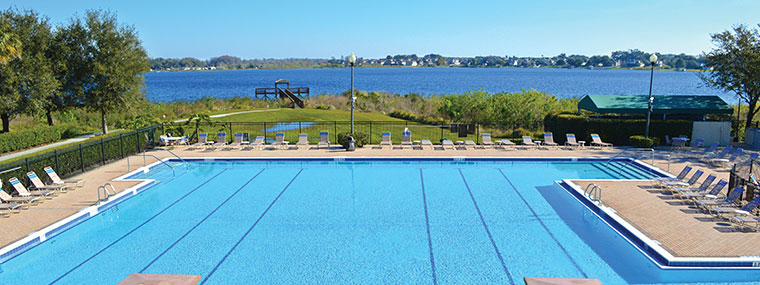
Keep on Communicating… from Word of Mouth to a Click of the Mouse
Communities of Excellence Communications and Community Winners Stoneybrook West Master Association and Plantation Park Private Residences
by Kathy Danforth / Published May 2015
Communication is the common ingredient that spells success or failure for life in a community from parties to rules enforcement to replacing balconies. While there has been a revolution in the way many people communicate, not everyone has proceeded in the same direction or at the same pace. This leaves associations trying to serve all of their residents with the task of adding on new means of reaching people while still maintaining more familiar methods. The 2014 winners of the Communications and Community division of the Communities of Excellence have successfully spanned the broadening field of communication to reach all of their owners.
 STONEYBROOK WEST MASTER ASSOCIATION
STONEYBROOK WEST MASTER ASSOCIATION
Stoneybrook West Master Association of Winter Garden, winner of the Communications and Community division for larger communities, is a 1,226-home association with the majority of residents under age 50. With this demographic, they have been able to focus on electronic communication while also maintaining their previous methods in their quest to reach everyone.
“We have approximately 1,400 e-mail addresses that I send a monthly newsletter to as well as a weekly e-mail with community activity updates,” says Jazz Cannon, Lifestyle Director. “The community manager consistently sends updates, and the residents are happy that he is communicating directly with them. Another improvement is the monthly report sent by the HOA president. It’s phenomenal because he talks about every challenge and how we’re working on it, and every improvement and how great the community is looking. We’re using Constant Contact so I can see who reads the e-mails, and everybody wants to read what he has to say.”
The association tried Twitter but found it was not as effective as Facebook. “Facebook is used by 75 percent of our residents, and it is used for updates to activities but is not used for business matters. There have been no problems with postings; our residents are very responsible,” Cannon reports. “We recently hit 700 ‘likes’ so we received a congratulations from Facebook!
“The website was started when the developer was still in control 13 years ago,” according to Cannon. “A new website is being reviewed by the board and will be launched very soon. This will be more user friendly and informative, with a link to the management company portal for payments, documents, work order requests, and information that is only available to residents. We have added realtor tabs and explain changes we have made to allow realtors better access to our property if they are selling a house in the community. We will also have an advertising section where residents can upload items for sale, as well as surveys relating to events and town center improvements.” The website will continue its “How Should It Look” section, which features the right and wrong way to comply with community standards.
By switching to e-mail for many communications, the association was able to save $21,000 per year in mailing costs, which was used to purchase LED signs. “Those are always effective,” says Cannon. “They are used to announce board meetings, architectural review committee meetings, and events.” In addition to having the monthly calendar e-mailed to residents, paper copies are printed and are made available in the lobby. “We can hand out a physical copy that shows all the in-formation for events whenever someone has questions,” Cannon states.
For emergency situations, every method of communication will be utilized. Two scanners coordinated with the police and fire departments, weather radios, and a weather antenna are located in the community, and all security and management personnel and the board vice president have a one-touch, Nextel phone for instant emergency communication. Mass e-mail, LED signs, Facebook, and the website are updated with an urgent message as needed. For good times and bad, communication is the key.
 PLANTATION PARK PRIVATE RESIDENCES
PLANTATION PARK PRIVATE RESIDENCES
Plantation Park Private Residences, with 320 homes, is the winner in the smaller communities division of Communications and Community. With a large rental population, communication with both owners and the residents on site is a high priority. Communication starts at orientation for new residents, where they are acquainted with the amenities and learn the basic rules of the community.
Manager Christopher Gullion reports that the main methods of communication in the community are the newsletters, bulletin boards, and the community app. Bimonthly newsletters are a prime messenger of what’s going on in the community, and they are posted on the bulletin boards. The five bulletin boards serve as very practical ways to get messages out—from meeting agendas to finding a bridge partner. “The bulletin boards are checked every day,” observes Gullion, “because they are located right by the mailboxes. Newsletters, official notices, and social functions are posted. A lot of our older folks who may not use the community app will see information there.”
 Plantation Park is one of the first condominiums to use a smart device app. “Residents can get information on news and events, find local restaurants, make payments, find their car, connect to the website, receive COA alerts, and more,” according to Gullion. “It’s a simple way to keep up with what’s going on, and we encourage all the residents to use it.”
Plantation Park is one of the first condominiums to use a smart device app. “Residents can get information on news and events, find local restaurants, make payments, find their car, connect to the website, receive COA alerts, and more,” according to Gullion. “It’s a simple way to keep up with what’s going on, and we encourage all the residents to use it.”
The community does maintain a Facebook page but dropped Twitter. The website has been optimized for tablet and smartphone use and provides association information as well as other local area items of interest. The community channel is another source of information on community activities and issues.
Though the United States Post Office conveyed most information five years ago, the community has diversified and amplified the way it reaches out to residents. Multiple means of communication combined with responsiveness to what messages work will keep Plantation Park in touch with all residents as technology continues to evolve.


